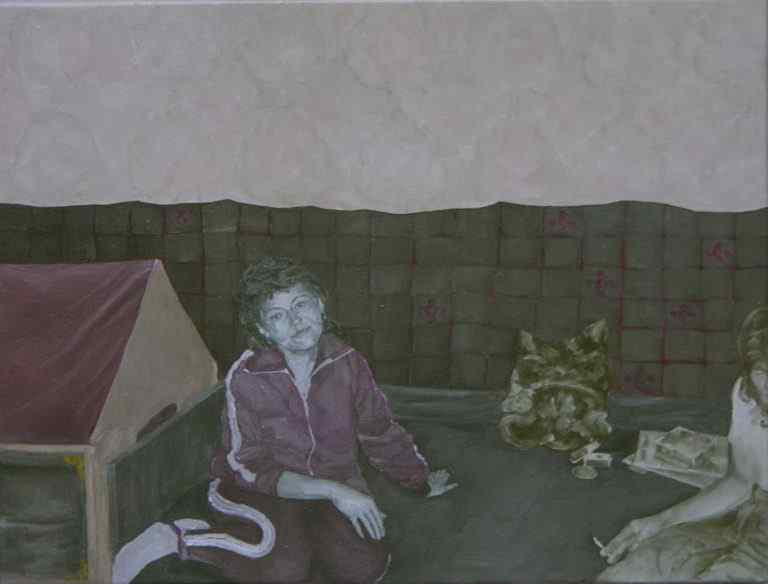Olívia Kovács: We Also Had
“The Most” – The SYAA’s Traditional Annual Exhibition

KOVÁCS Olívia
“For the series called We also had I have collected family photos of a kid’s tent common in the 80’s. The objective of this series is to present the world of the 80’s through a common motive, and at the same time to present the childhood of my own generation.” Olívia Kovács
-
The tradition of the Studio of Young Artists’ annual exhibitions is practically as old as the Studio itself. The organization was created by the cultural political leaders in 1958, right after the '56 revolution. It was a major turning point in the Studio's history when, after the political changes in 1989, it was turned into an artists' association, an organizational framework that was established as a result of the social and legal changes of 1989. With very few exceptions and regardless of the actual political climate, the tradition of the annual exhibitions has been carried on for all these decades and it has been shaped by a curatorial approach since at least 1996.
Currently, the Studio has approximately five hundred members, and the fact that artists may become senior members by the invitation of the board after they turn thirty-five is a token of the association’s constant renewal. Since young artists still see their membership in the Studio as an important step in their artistic career, the Association practically covers the whole spectrum of the professional young artists' generation.
Since the beginning of the 1990s, the Studio has received a relatively stable public funding that has ensured its basic existence. On top of this, the Studio has participated in numerous national and international collaborative projects, exchanges, residencies, etc., which have been financed by special grants that the Studio has received via applications. The annual exhibitions have been realized in a similar way, and have been, in most cases, hosted by the largest and most important contemporary art institutions of the time (the Műcsarnok – Kunsthalle, the Ernst Museum, the National Gallery, etc.). Although the organizational framework and premises of these exhibitions considerably shifted during these past decades, the hosting institutions could always be certain about the impact these exhibitions exerted not only on the professional art scene but on a larger audience as well. Since the tradition of the annual exhibition started, it has never occurred that the Studio has not received financial support for it either from the Ministry of Culture or the Hungarian National Cultural Fund.
In the year of 2014, the situation fundamentally shifted since the current governmental cultural policy decided not to support the existence and the functioning of either the Studio or larger art institutions that exhibit contemporary art (or if they do, it is on a nominal and almost symbolic basis). The members of the Studio decided to continue the tradition of the annual exhibitions despite the dire circumstances, and endeavor to compensate for the impossibility of the current situation by mobilizing their own personal resources in new and innovative ways. These resources are far from having always been present and the participating artists have been obliged to use the meager spare time they possess besides earning their living and producing art. The duties they perform within the perimeters of this year's annual exhibition would by any means be considered as the obligations of a public art institution. Yet one of the most important gains of this new way of exhibition-making is that the artists and their works get physically closer to their audiences. The spectators are not obliged to visit art institutions and galleries (which consider them as paying customers anyway) but it is the artist who “visits” them in their everyday and customary surroundings.